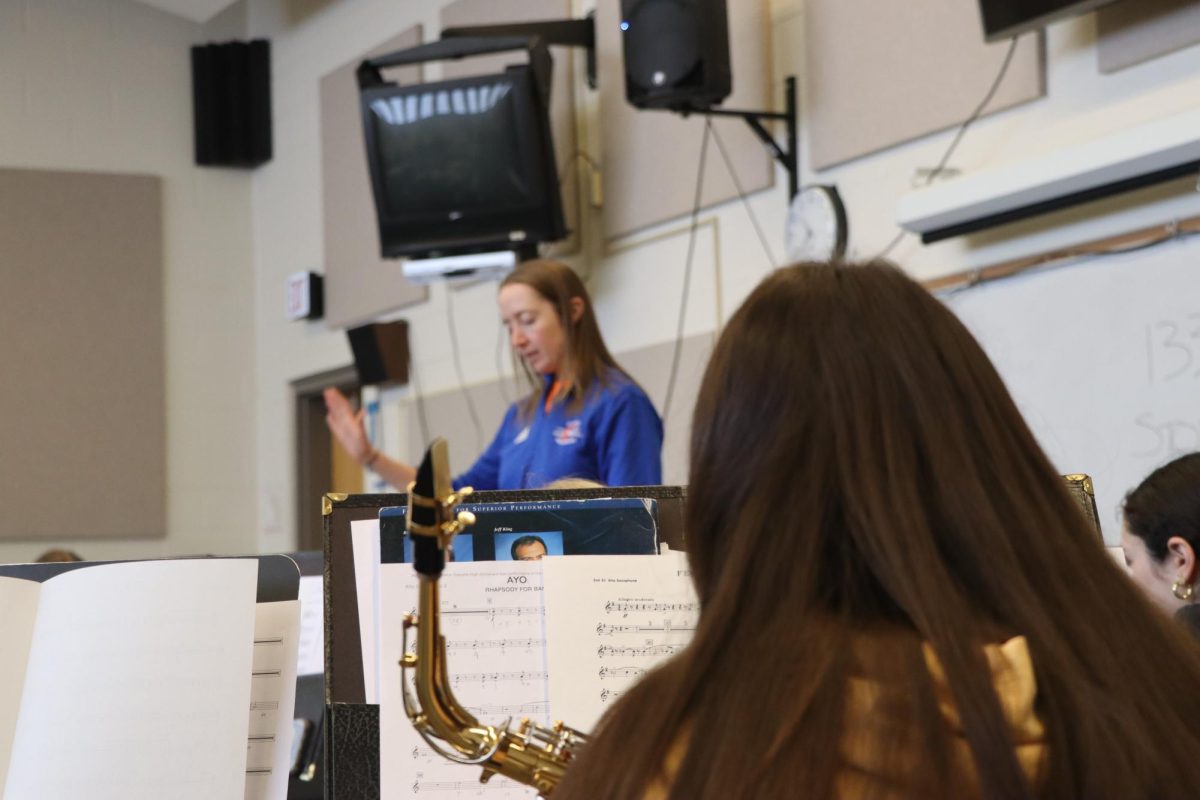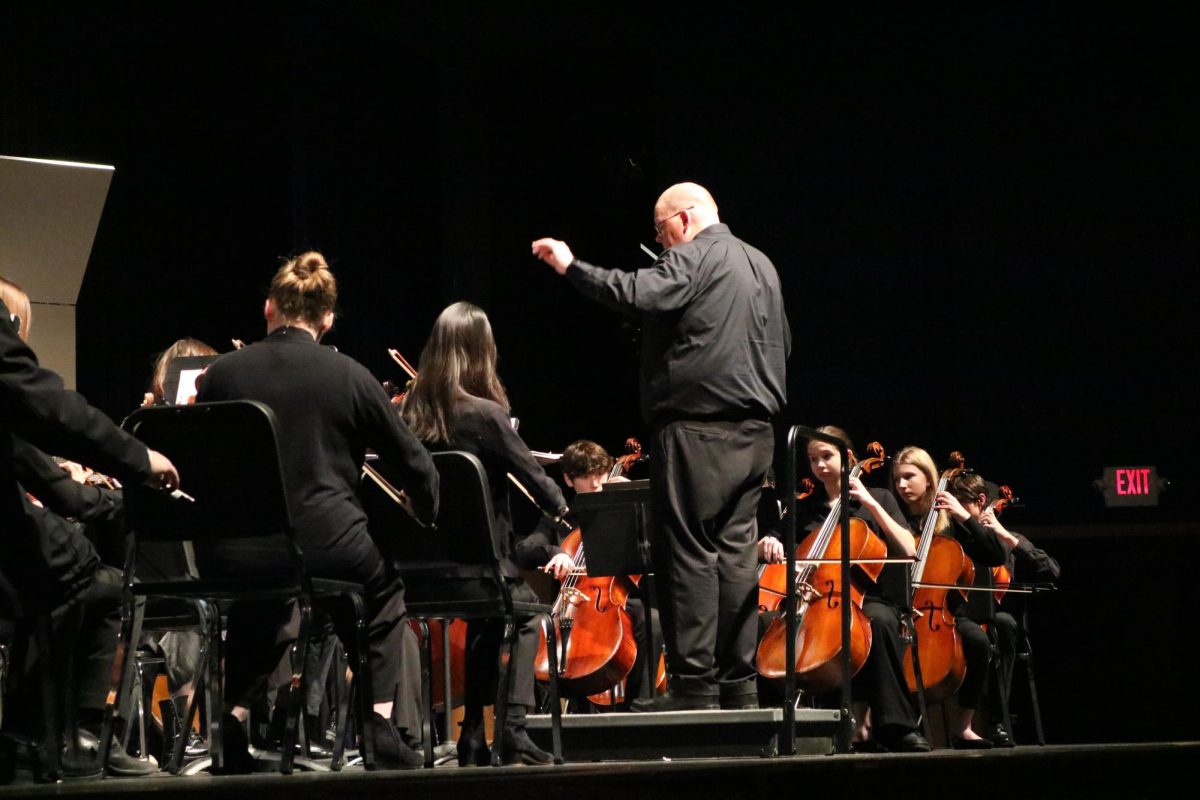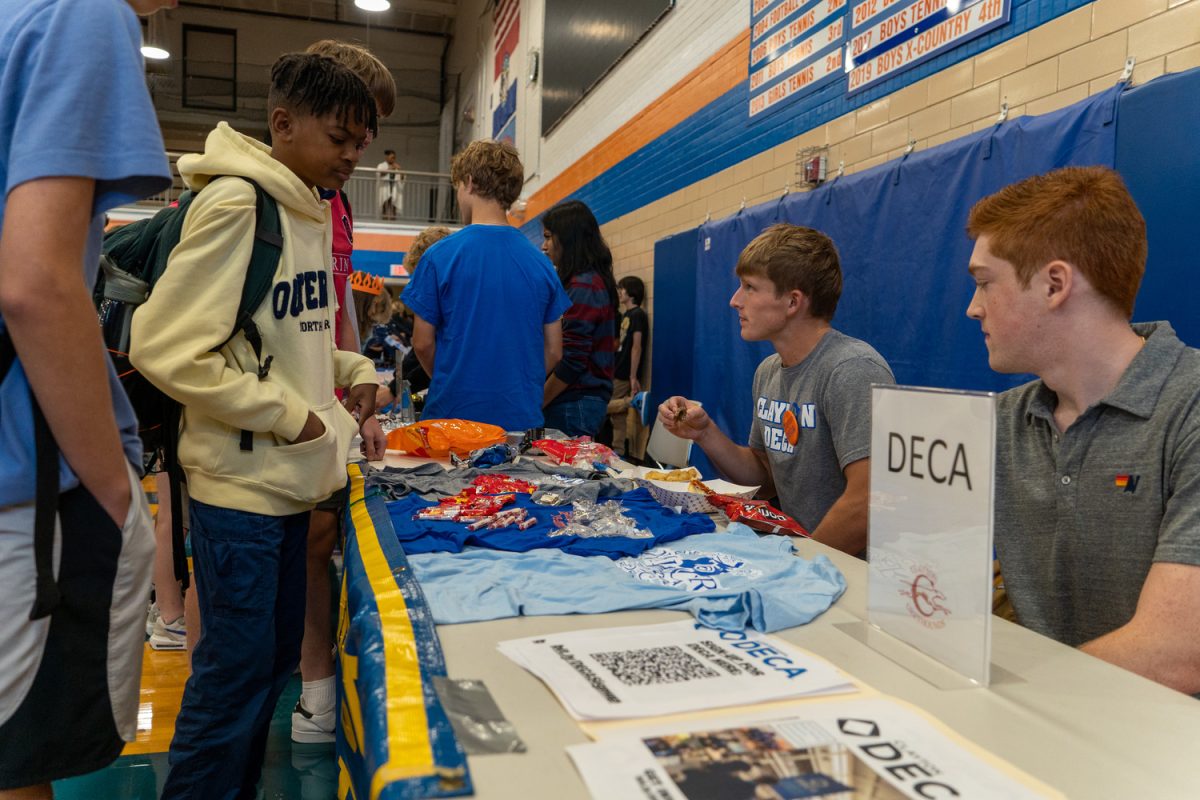
Anyone currently at CHS knows that there’s something big in store with the new construction project. The changes begin in the schedules of those with business, journalism, and sewing classes, to name a few. The seemingly foreign new classrooms—the “classroom annexesâ€â€”may have been confusing at first, but students have taken the change in stride.
Don’t be fooled—those “annexes†are really just the two double-wide trailers situated neatly behind the math office and serve as replacements for the cottage classrooms that will be torn down later this fall.
Nostalgic as she is about seeing the cottage go, journalism teacher Christine Stricker admits that the trailers do have their pros:
“We are pretty much set here in the trailers,†Stricker said. “They’re pretty nice—you can hear every step you take—it’s spacious. The kids aren’t quite on top of each other anymore.â€
The opinion on space is undisputed: the trailers are roomy, especially for the newspaper, yearbook, and broadcast news classes.
“Everybody loves the cottage,†Stricker said. “It’s become a home away from home for many students, but it’s just not equipped for what we do.â€
Regarding technology, Stricker said her new classroom is set up well. But, she added, it’s still not “ideal†for broadcasting purposes. It’s just one step up from the cottage.
There have, of course, been sacrifices. With the cottage scheduled for demolition, CHS effectively has no kitchens.
“The downside was that we had to put cooking on hiatus for two years,†said assistant principal Marci Pieper. “[But] it’s worth the wait.â€
FACS teacher Linda Williams, who used to teach cooking, agrees.
“There’s an upside and downside,†Williams said. “I really like the cottage, it was very unique. But the old kitchens were estimated to have been 55 to 60 years old.â€
Williams added that the new facilities will allow for a “completely reorganized†way of teaching both her cooking and wardrobe classes.
“I think it’s very sad [for cooking to] be gone two years, but there’s no alternative,†she said. “There’s a whole group of kids I’ll miss.â€
Many students wait until junior and senior year to fill their required Career and Technology Education classes. But, for the next two years, rising juniors and seniors will not have the choice of cooking classes to complete these credits.
Like Williams, most teachers transferred to the annexes are not worried about the spaces themselves, but rather the students. Fortunately, the assimilation of the annexes into student life was generally smooth after day one. The trailers, though to find at first, are situated so close to the cottage itself that a walk to class is not very different than it used to be.
“I personally helped a half-dozen people the first day,†associate principal Dan Gutchewsky said. “We made a point of putting up a lot of signage.â€
Though the adaptation was easy enough on the students’ end, the moving-in process was slightly more difficult. For Pieper, the biggest disappointment was that the moving process took longer than she originally thought, causing the classrooms’ set-up to still be in progress on the first day. Fortunately, the transfer was finished in a matter of days.
“The custodial staff did a great job.†Pieper said. “There was little disruption.â€
For Stricker, being “three different peopleâ€â€”a teacher, mover, and organizer—was “a lot to deal with.†In the end, she managed to set everything up by keeping it at a bare minimum.
“[Moving in] was rough,†Stricker said, “but the kids adapted fine. We’re living more simply—getting ready to move again.â€
Whatever the fine-tuning and adjustments made now might be, many teachers are being kept optimistic by the thought that, two years down the road, there will be brand-new science, world language, and journalism facilities, among other things.
“The architects tell us it’s going to be two years and no less,†Stricker said. “No one knows everything now, so we’ll just have to go with the flow. But I’m really excited about the new building. At least Broadcast [GNN] will benefit. We’ll have a studio and control room, so we can do live shows. â€
But to get to that goal, some things must be forgone for the moment, and others endured, such as the trailers, which both Principal Louise Losos and Williams view as “a necessary evil.â€
“It’s life,†Losos said. “They’re really pretty good; I wouldn’t want them for longer, but they’ll be acceptable for a couple years.â€
Williams has another thing to look forward to, of course: the relaunch of the cooking program. Right now, when not teaching wardrobe classes, she additionally helps out with personal finance classes instead of cooking.
“I miss teaching my courses,†she said. “But I don’t mind… it’s not a lifetime.â€
The bottom line? Trailers might not be the ideal setting for a classroom. But endure it now, be patient, and get rewarded later. If all goes well and on schedule, in two years a new-and-improved CHS will be unveiled.
“I’ve seen the timetable, and [the architects] have been very cognizant of our needs,†said Gutchewsky. “Hopefully, Fall 2011 will be up and running at full blast.â€






